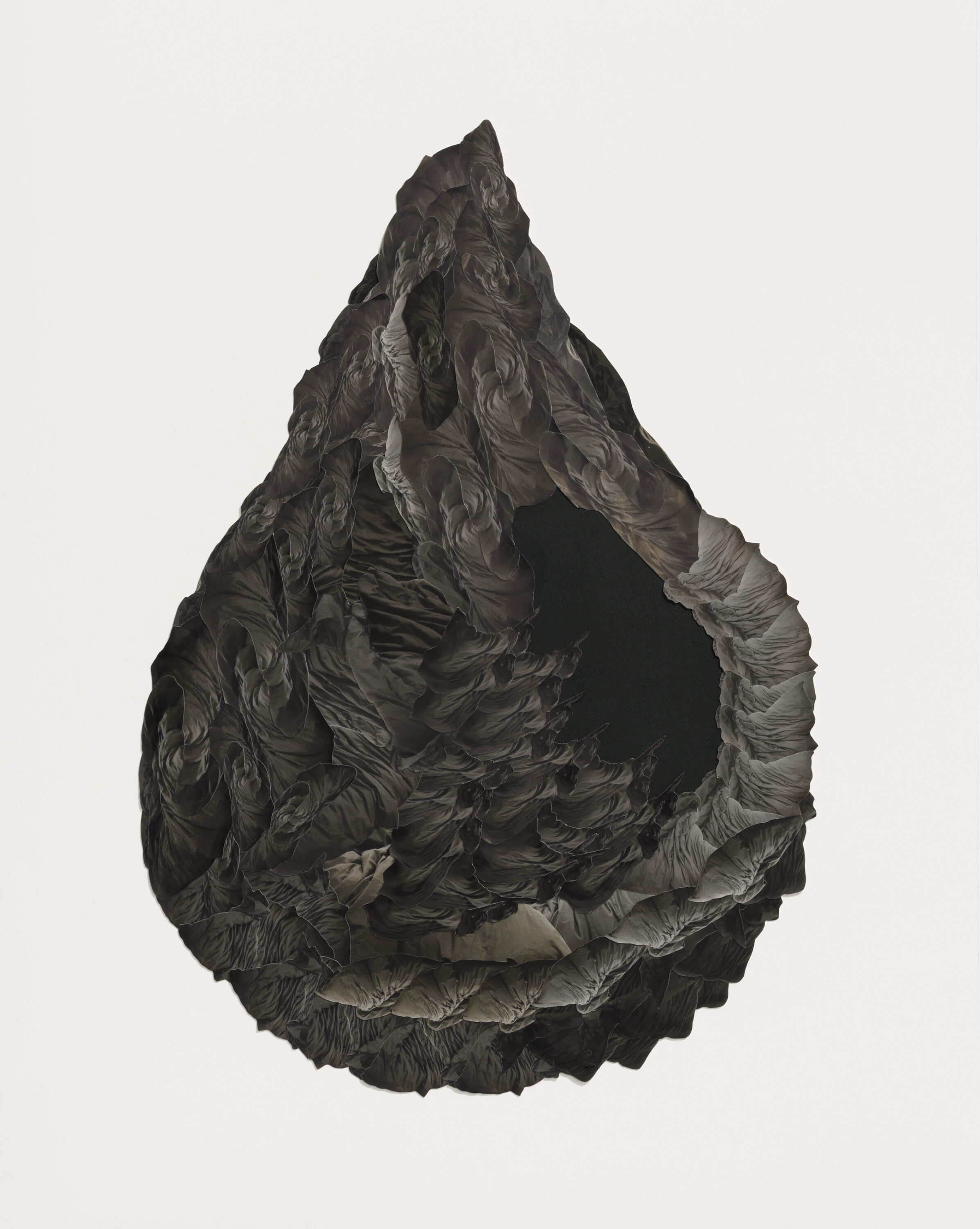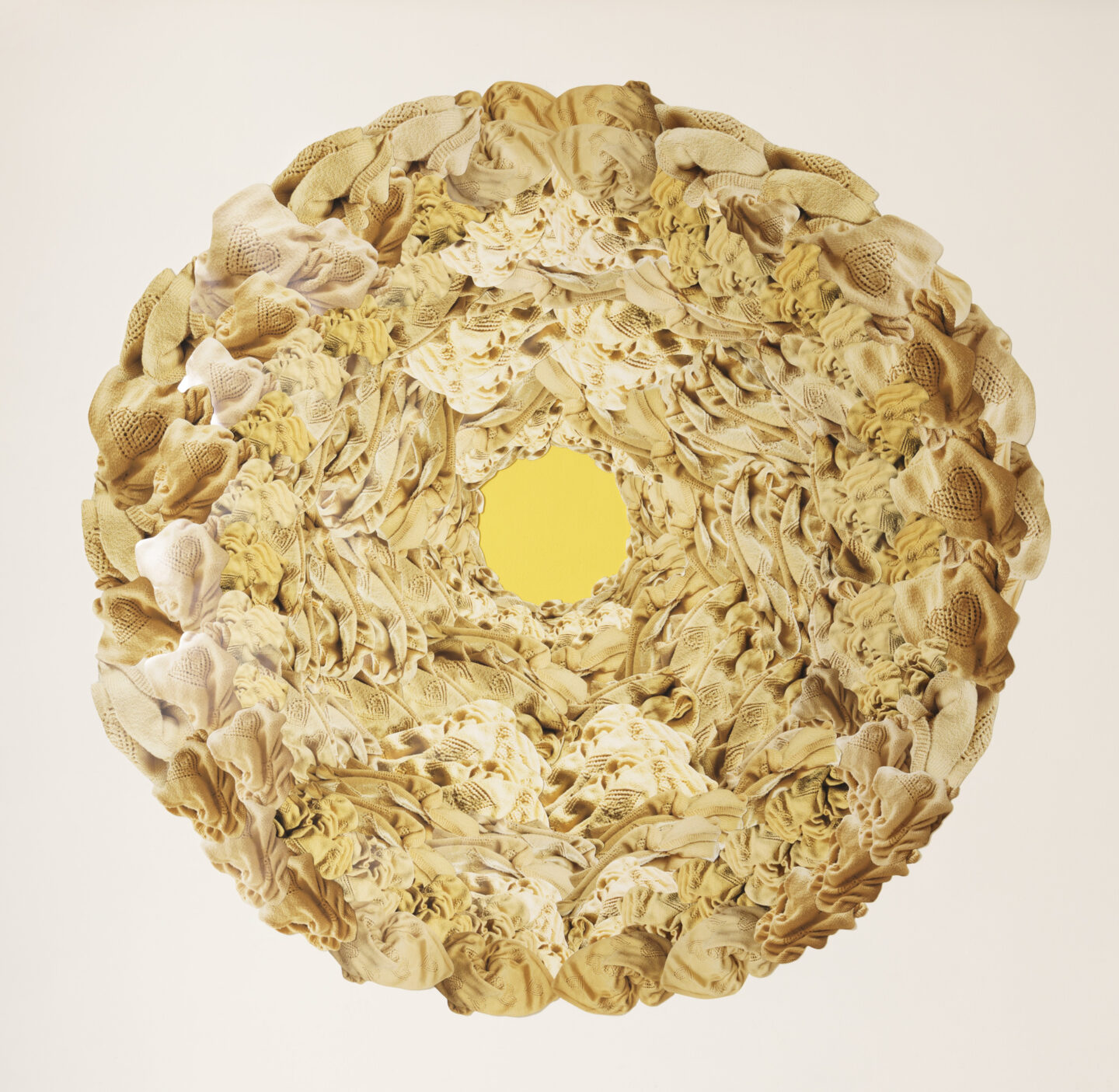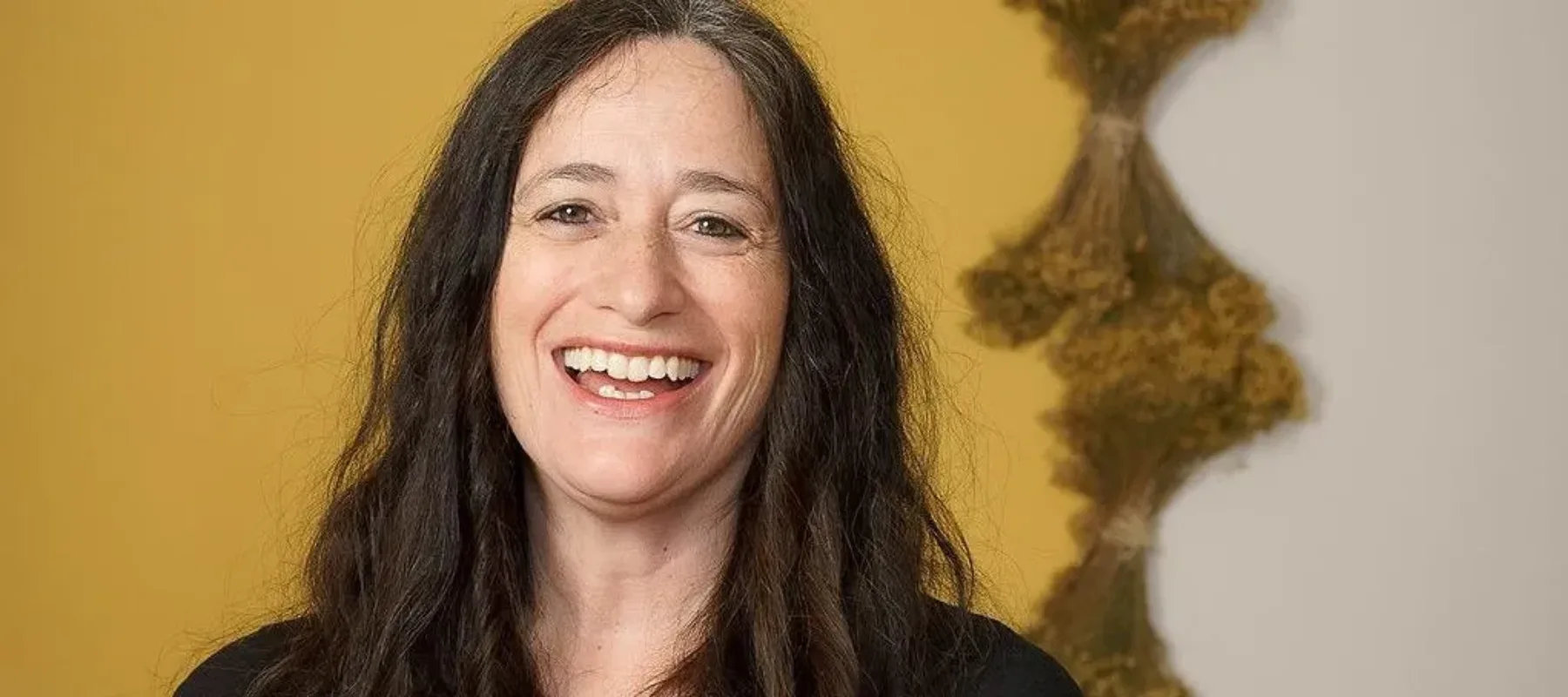The sixth installment of NMWA’s Women to Watch exhibition series, Paper Routes, is presented by the museum with the integral partnership of our national and international outreach committees. The exhibition showcases contemporary artists working in paper, celebrating their wide-ranging approaches and the transformation of this ubiquitous material into complex works of art.
Artist: Mira Burack
Nominating committee: New Mexico State Committee / Consulting curator: Laura Addison, Museum of International Folk Art

1. What was your inspiration for your works selected for Paper Routes?
These two works are intricate photography collages made up of hundreds of layered photographs of bedding. The pieces intersect at my interior domestic space and the surrounding environment and landscape. (dark) Waterdrop (2018) is made up of photographs of my black duvet comforter. When I created this piece, I was thinking about the horrific water crisis in Flint, Michigan. How desperately important clean water is, in our bodies and for our earth.
Sun (son) (2015), a large circular installation, includes photographs that I took of my son’s baby blanket that are collaged in the form of the bright New Mexico sun. In observing the physical materials that we sleep with, a hidden language is revealed. It tells stories of our body’s movement, our experience of comfort, our intimacy with others, the healing properties of rest, and moments of deep pleasure and surrender. The bed is a place of such importance, as we spend one third of our lives there.
2. Is this piece representative of your oeuvre? How does it fit into your larger body of work?
Yes, many of my projects explore the site of the bed and the legacy of sleep. I consider the bed a rich, contemplative site to consider materials, relationships, and our experience of rest in a swiftly paced 21st century.
3. As an artist, what is your most essential tool (besides your hands!)? Why?
Scissors. With each photo, I cut along the lines of the bedding to isolate it from the bed and the room. This process allows me to focus on the shape and form of the bedding, the unconscious sculpture created by one’s body during sleep. The scissors are an extension of my eye and hand, and the process of cutting is reflective. I feel as if I am learning from the material, following each curve, crease, fold, drape, and color shift in the image of the fabric.

4. Where do you obtain your materials?
I work with the material and living beings in my daily life, textiles, plants, animals, family, and the spaces around them such as the home, bed, table, landscape. I also gather materials in my immediate environment. I harvest plants, reuse commonplace textiles from around my home, and collect found wood. There is power in materials that are connected to meaningful daily life experiences.
5. What is the last exhibition you saw that you had a strong reaction to?
Labor: Motherhood & Art in 2020 at the University Art Museum at New Mexico State University, co-curated by museum Director Marisa Sage and artist Laurel Nakadate. It was powerful to witness an exhibition devoted to the experience of motherhood. I feel so relieved that exhibitions are exploring this territory more recently. How is it that a human’s most primary experience—being mothered or being a mother—is so underrepresented in contemporary art and art history?
Learn more from the artist in this exclusive studio tour:
Visit the museum to see Paper Routes, on view through January 18, 2021. Hear from more of the featured artists through the Paper Routes Audio Guide and purchase the fully illustrated catalogue.

